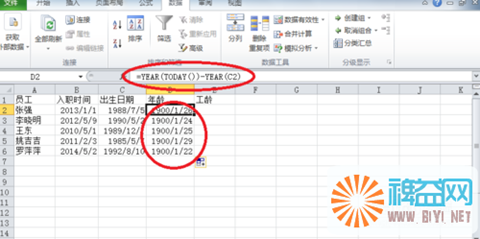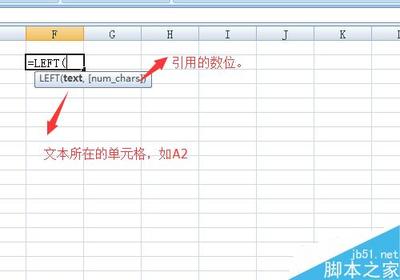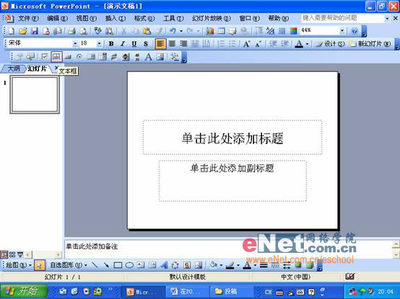Day 开头的函数
使用单元:
uses DateUtils
●function DateOf(const AValue: TDateTime): TDateTime;
描述:
使用 DateOf 函数用来把一个 TDateTime 类型的变量转变成一个只带有日期的 TDateTime 类型变量。
例如:
showmessage(DateTimetostr(dateof(now())));
你得到的是 2003/03/19
而 showmessage(DateTimetostr((now())));
得到的是 2003/03/19 10:50:49
●function DateTimeToStr(DateTime: TDateTime): string;
描述:
DateTimeToString 函数将 TDateTime 类型的参数 DateTime转换成一个字符串,使用给定的全局变量ShortDateFormat 的格式,时间部分按照给定的全局变量 LongTimeFormat的格式。其中 DateTime 为
零的部分将不会显示出来。
例如:
ShortDateFormat:='yyyy mm dd';
showmessage(DateTimetostr((now())));
你将得到:2003 03 19 10:50:49
●procedure DateTimeToString(var Result: string; const Format:string; DateTime: TDateTime);
描述:
DateTimeToString 方法将TDateTime类型的参数DateTime按照由参数Format提供的格式转化成字符串,并保存在Result中。对于Format的格式类型,请看 Date-Timeformat strings 的帮助。
例如:
DateTimeToString(result,'yyyy mm dd',now());
那么 result的结果为:2003 03 19 10:50:49
●procedure DateTimeToSystemTime(DateTime: TDateTime; varSystemTime: TSystemTime);
描述:
有时为了调用API函数来使用系统时间,你可以使用 DateTimeToSystemTime 方法,来将一个
TDateTime 类型的时间变量转换成一个 TSystemTime 类型的 系统时间。
●function DateTimeToUnix(const AValue: TDateTime ): Int64;
描述:
使用 DateTimeToUnix 函数来将一个 TDateTime 型时间变量转换成一个相应的 Unix格式的日期和时间。
Unix date-and-time values are encoded as the number of seconds thathave elapsed
since midnight at the start of January 1, 1970.
●function DateToStr(Date: TDateTime): string;
描述:
使用 DateToStr 函数能得到 TDateTime 日期时间类型的日期部分。日期的转换格式依赖于
全局变量 ShortDateFormat。
●function DayOf(const AValue: TDateTime): Word;
描述:
对于给定的TDateTime类型的日期时间,使用 DayOf 函数能得到该日期是该月份的第几天。
该函数的返回数值在 1 到 31 之间
注意:DayOf 函数得到的结果与 DayOfTheMonth 相同。
例如:
showmessage(inttostr(dayof(now)));得到的是:19 (今天是 某月19日)
●function DayOfTheMonth(const AValue: TDateTime): Word;
与 DayOf 相同。
●function DayOfTheWeek(const AValue: TDateTime): Word;
描述:
对于给定的TDateTime类型的日期时间,使用 DayOfTheWeek 函数能得到该日期是该星期的
第几天。DayOfTheWeek 函数的返回数值为 1 到 7,其中 1 表示星期一,而 7 表示星期日。
注意:DayOfTheWeek 是 ISO 8601 标准的(此标准为 星期一是一周的第一天)。对于一周
的第一天是星期日的标准,如果想获得星期数,请使用 DayOfWeek 函数。
Tip: To make the return value more readable, use the Day of weekconstants.
●function DayOfTheYear(const AValue: TDateTime): Word;
描述:
根据给定的日期时间参数AValue,使用 DayOfTheYear 函数能得到在该日期所在的年份中,该
日期按照顺序所计算的天数。因此,作为TDateTime类型的变量 “1月1日”在该函数所得到的
结果为 1 ,“1月2日”所得到的结果为 2,“2月1日”所得到的结果就为 32,依次类推。
●function DayOfWeek(Date: TDateTime): Integer;
Description:
DayOfWeek returns the day of the week of the specified date as aninteger between
1 and 7, where Sunday is the first day of the week and Saturday isthe seventh.
Note: DayOfWeek is not compliant with the ISO 8601 standard, whichdefines Monday
as the first day of the week. For an ISO 8601 compliant version,use the DayOfTheWeek
function instead.
描述:
按照给定的TDateTime类型的参数Date,DayOfWeek 函数得到一周中的第几天,从1到7。
这里 星期日 是一周的第一天,而 星期六 是第七天。
●function DaysBetween(const ANow, AThen: TDateTime): Integer;
描述:
根据两个TDateTime类型的日期时间变量 ANow 和 AThen,DaysBetween函数能得到两者之间的
天数的差距。
DaysBetween 仅仅根据天数的不同来计算。因此,对于 1999年12月31日 下午11点59分 到
2000年1月1日 11点58分,该函数得到的结果是 0,因为两者之间的时间差别还差 1 分钟才到
1 天。
●function DaysInAMonth(const AYear, AMonth: Word): Word;
描述:
对于各定的 年份和月份,DaysInAMonth 函数能得到 该月份的总天数。
年份应该为 从 1 到 9999
月份应该为 从 1 到 12
●function DaysInAYear(const AYear: Word): Word;
描述:
对于给定的年份,DaysInAYear函数能得到该年份的总天数。
年份应该为 1 到 9999。
●function DaysInMonth(const AValue: TDateTime): Word;
描述:
根据给定的TDateTime类型的时间日期参数AValue,DaysInMonth函数能得到该月份的总天数。
●function DaysInYear(const AValue: TDateTime): Word;
描述:
根据给定的TDateTime类型的时间日期参数AValue,DaysInYear函数能得到该年份的总天数。
●function DaySpan(const ANow, AThen: TDateTime): Double;
描述:
根据两个TDateTime类型的日期时间参数ANow和AThen,DaySpan能得到在天数上的差距。
与 DaysBetween 函数不同,DaysBetween 函数 只是计算 整的天数,而 DaySpan函数会
将不足一天的数也得到。
注意:此函数返回的数值为 Double 型。
☆ Month 开头的函数
●function MonthOf(const AValue: TDateTime): Word;
描述:
根据给定的TDateTime类型的时间日期参数AValue,MonthOf函数能得到该年份的该月份数。
MonthOf返回数值为 1 到 12。
注意:MonthOf函数得到的数值与MonthOfTheYear函数相同
●function MonthOfTheYear(const AValue: TDateTime): Word;
与MonthOf函数相同。
●function MonthsBetween(const ANow, AThen: TDateTime):Integer;
描述:
根据两个给定的TDateTime类型的参数ANow和AThen,MonthsBetween函数能得到两个日期在月份
上差距数。因为月份的天数是不同的,所以 MonthsBetween 函数返回的是一个近似值,该近似
值基于每个月份为 30.4375 天。不足一个月的数字将不被计算。
因此,例如,对于 2月1日 到 2月28日,MonthsBetween 返回的数值为 0。
同样,对于 2月1日 到 3月1日,MonthsBetween 返回的数值也是 0。
●function MonthSpan(const ANow, AThen: TDateTime): Double;
描述:
根据两个给定的TDateTime类型的参数ANow和AThen,MonthsBetween函数能得到两个日期在月份
上差距数。因为月份的天数是不同的,所以 MonthsBetween 函数返回的是一个近似值,该近似
值基于每个月份为 30.4375 天。与 MonthsBetween 函数不同,MonthsBetween函数不计算不足
一个月的数字,MonthSpan函数将会得到不足一个月的数字。
注意:此函数返回的类型为 Double
●function MonthStr(DateTime: TDateTime): string;
Description
HTTP message headers permit several formats for the representationof date and time
values. MonthStr converts a TDateTime value into a stringrepresenting the month.
MonthStr allows server applications to work with date values takenfrom HTTP request
messages, without worrying about the details of how they areformatted.
☆ Week 开头的函数
●function WeekOf(const AValue: TDateTime): Word;
描述:
根据TDateTime类型的日期时间参数AValu,WeekOf函数会得到该星期为一年的第几个
星期。
●function WeeksInAYear(const AYear: Word): Word;
描述:
WeeksInAYear 函数根据年份得到在该年份中共包含多少个星期。
●function WeeksBetween(const ANow, AThen: TDateTime):Integer;
描述:
根据两个TDateTime类型的日期时间参数ANow和AThen,WeeksBetween函数将得到这两个时间在
星期上的差数。如果差数不足一个星期,则忽略掉。
●function WeekSpan(const ANow, AThen: TDateTime): Double;
描述:
根据两个TDateTime类型的日期时间参数ANow和AThen,WeeksBetween函数将得到这两个时间在
星期上的差数。如果差数不足一个星期,则WeekSpan函数不会忽略掉。
注意:此函数的返回类型为 Double
☆ Year 开头的函数
●function YearOf(const AValue: TDateTime): Word;
描述:
根据给定的TDateTime类型的日期时间参数AValue,YearOf函数能得到该日期的年份数字。
YearOf函数返回的数值为从 1 到 9999
●function YearsBetween(const ANow, AThen: TDateTime):Integer;
描述:
根据两个给定的TDateTime类型的参数ANow和AThen,YearsBetween函数能得到两个日期在年份
上差距数。因为年份的天数是不同的,所以 YearsBetween 函数返回的是一个近似值,该近似
值基于每年的天数为 365.25 天。不足的一年的差距将不会被计算。
因此例如:对于 1月1日和12月31日,如果这两个日期在同一年,则 YearsBetween 返回数值
为 0;如果这两个日期在临近的年份,则 YearsBetween 函数返回数值为 1。
●function YearSpan(const ANow, AThen: TDateTime): Double;
描述:
根据两个给定的TDateTime类型的参数ANow和AThen,YearsBetween函数能得到两个日期在年份
上差距数。因为年份的天数是不同的,所以 YearsBetween 函数返回的是一个近似值,该近似
值基于每年的天数为 365.25 天。与 YearsBetween 函数不同,YearsBetween函数将忽略掉不
足一年的数字,而 YearSpan 将计算不足一年的数字。
注意:该函数返回类型为Double
●function Yesterday: TDateTime;
描述:
Yesterday函数能得到当前日期的前一天的日期,返回数值中不包括时间部分。
例如:
当前日期是 2003/3/19
则 showmessage(datetimetostr(Yesterday));
将得到 2003/3/18
☆日期的合成
●function EncodeDate(Year, Month, Day: Word): TDateTime;
描述:
EncodeDate函数将根据参数 年份、月份、日子 而得到一个TDateTime类型的时间变量。
●function EncodeDateDay(const AYear, ADayOfYear: Word):TDateTime;
描述:
EncodeDateDay将根据参数年份和天数,而得到一个TDateTime类型的时间变量。
其中AYear 为 1 到 9999。
ADayOfYear 为日子在该年份顺序排列的天数,例如,1月1日时,ADayOfYear为1,
2月2日时,ADayOfYear为2,3月1日时,ADayOfYear为32。
●function EncodeDateMonthWeek(const AYear, AMonth, AWeekOfMonth:Word; const ADayOfWeek: Word =
1): TDateTime;
描述:
EncodeDateMonthWeek 函数将根据参数 年份、月份、星期数,星期几,来得到一个TDateTime类型
的时间变量。
其中AYear 为 1 到 9999。
其中AMonth 为 1 到 12。
AWeekOfMonth是在该月份的星期数,1 表示第一个星期,可能包含4天或更多的天数。
注意,一个月的第一天如果是 星期5,星期6或星期日,用表示这三天的AMonth数值必须设定
为上一个月份的数字,同时 AWeekOfMonth 要设为在上一个月所在的星期数。
同样,如果一个月的最后一天是 星期1,星期2,或星期3,那么用表示这三天的AMonth数值
必须设定为下一个月份的数字,同时 AWeekOfMonth 为 1。
ADayOfWeek表示星期几,星期一为1,星期二为2。
●function EncodeDateTime(const AYear, AMonth, ADay, AHour, AMinute,ASecond, AMilliSecond:
Word):TDateTime;
描述:
EncodeDateTime 根据参数 年份、月份、日子、小时、分、秒、毫秒 来得到一个TDateTime类型
日期时间。
●function EncodeDateWeek(const AYear, AWeekOfYear: Word; constADayOfWeek: Word = 1): TDateTime;
描述:
EncodeDateWeek 根据参数 年份、星期数、星期几 来得到一个TDateTime类型日期时间。
AWeekOfYear是在该年份的星期数,1 表示第一个星期,可能包含4天或更多的天数。
注意,一年的第一天如果是 星期5,星期6或星期日,用表示这三天的AYear数值必须设定
为上一个年份的数字,同时 AWeekOfYear 要设为在上一个年所在的星期数。
同样,如果一年的最后一天是 星期1,星期2,或星期3,那么用表示这三天的AYear数值
必须设定为下一个年份的数字,同时 AWeekOfYear 为 1。
ADayOfWeek表示星期几,星期一为1,星期二为2。
●function EncodeTime(Hour, Min, Sec, MSec: Word): TDateTime;
描述:
EncodeTime函数根据参数 小时、分、秒、毫秒 得到个一个TDateTime数值。
☆日期的分解
●procedure DecodeDate(Date: TDateTime; var Year, Month, Day:Word);
描述:
DecodeDate从一个TDateTime类型参数Date中分解出得到年份、月份、日子。
●procedure DecodeDateDay(const AValue: TDateTime; out AYear,ADayOfYear: Word);
描述:
DecodeDateDay 方法会根据TDateTime类型参数AValue 得到相应的年份和日期总数。
ADayOfYear:1月1日,此数值为1;1月2日,此数值为2。
●procedure DecodeDateMonthWeek(const AValue: TDateTime; out AYear,AMonth, AWeekOfMonth,
ADayOfWeek: Word);
描述:
DecodeDateMonthWeek方法根据TDateTime类型参数AValue 得到相应的年份、月份、月份中的第几个
星期、星期几
AYear:年份
AMonth:月份,1 到 12
AWeekOfMonth:在该月份中的第几个星期
ADayOfWeek:星期几。星期一为1。
●procedure DecodeDateTime(const AValue: TDateTime; out AYear,AMonth, ADay, AHour, AMinute,
ASecond, AMilliSecond: Word);
描述:
DecodeDateTime 方法根据TDateTime类型参数AValue 得到相应的年份、月份、日子、小时、分、秒、
毫秒。
●procedure DecodeDateWeek(const AValue: TDateTime; out AYear,AWeekOfYear, ADayOfWeek: Word);
描述:
DecodeDateWeek方法根据TDateTime类型参数AValue得到相应的年份、在该年中的第几个星期、星期几。
 爱华网
爱华网


